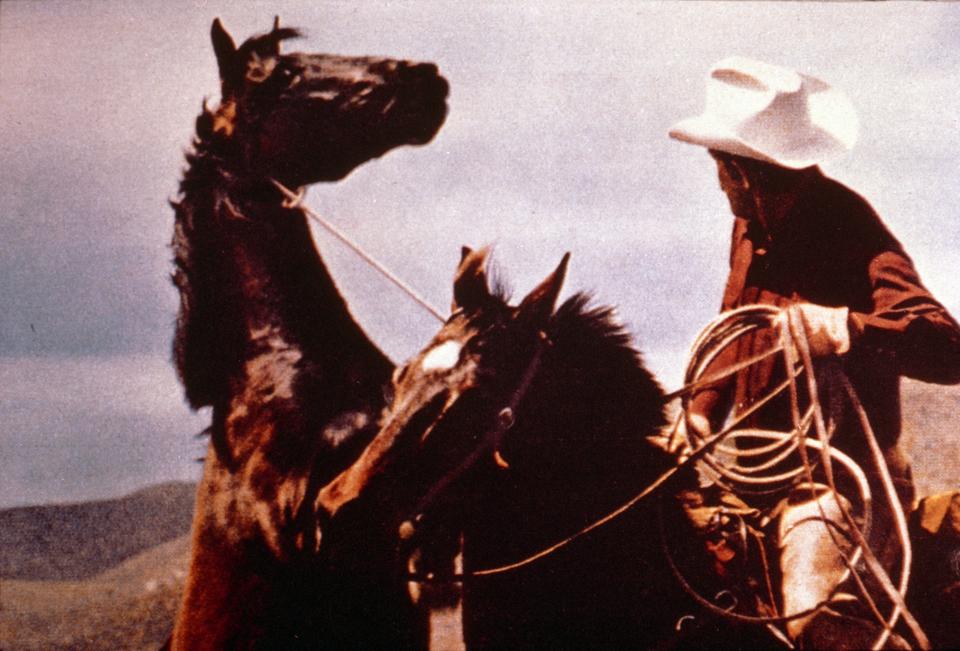
News
‘Deal with the Devil’: Harvard Medical School Faculty Grapple with Increased Industry Research Funding

News
As Dean Long’s Departure Looms, Harvard President Garber To Appoint Interim HGSE Dean

News
Harvard Students Rally in Solidarity with Pro-Palestine MIT Encampment Amid National Campus Turmoil

News
Attorneys Present Closing Arguments in Wrongful Death Trial Against CAMHS Employee

News
Harvard President Garber Declines To Rule Out Police Response To Campus Protests
ICA Showcases Complexity of 1980s

Despite last summer’s neon fashion trend, it seems nobody really likes to remember the 1980s—the decade of legwarmers, bad hairstyles, and monstrous shoulder pads. However, a new exhibition at the Institute of Contemporary Art—the first major museum exhibition with its focus in the United States—is dedicated to examining the cultural value and influence of the 1980s.
Featuring over 100 works from roughly 90 artists, “This Will Have Been: Art, Love & Politics in the 1980s” traces the decade through four major themes, titled “Gender Trouble,” “The End is Near,” “Democracy,” and “Desire & Longing.” The exhibit, which actually covers art from the years 1979 to 1992, brings together the works of a wave of artists from this time who sought to make statements about a dynamic era pulled in different directions by powerful forces.
Helen Molesworth, the Barbara Lee Chief Curator at the ICA, said she began thinking about the 1980s when she considered the decade’s relevance to the 2000s. “A lot of folks were realizing that it was the 20-year anniversary of the deaths of people they had lost during the AIDS crisis.… Twenty years is a moment where you can really pause and reflect. It’s a whole lifetime,” she said. Molesworth said that artists in the 1980s, many of whom belonged to the BLGTQ community, were grappling not only with the losses of their loved ones but also struggling to come to terms with their places in an era in which mass media was being increasingly harnessed for artistic expression.
The “Gender Trouble” section of the exhibit calls into question the consequences of the 1970s feminist movement. “[The 1970s] sort of established the basic parameters of [male and female] equality, but other kinds of questions emerged,” Molesworth said. “Are men the [only] kind of standard? Or were we interested in different kinds of relationships—different relationships to power, different relationships to sexuality?” she said. The centerpiece of this section is Canadian photographer Jeff Wall’s iconic photograph “Picture for Women,” which depicts a woman standing with her back to another camera, staring at the viewer. The image deconstructs the history of women as objects by presenting the female subject as both the viewer and the viewed, underscoring the decade’s changing social currents.
No discussion of women’s power, however, would be complete without a challenge to the traditional concepts of masculinity. “One of the things that feminism suggests is that if women are equal to men, the fabric of our social and intimate lives will shift, and that will create a shift for men as well as for women,” Molesworth said. German artist Albert Oehlen’s “Self-Portrait with Shitty Underpants and Blue Mauritius” reflects the artist’s frustration with the whims of the 1980s art market and his inability to control even his most basic functions.
The category “The End is Near” homes in on personal crises, from the loss of the individual to the growing marketplace. While some pieces question the true essence of a person—whether one is defined by one’s preferences or something deeper—other pieces express a growing horror at the rapidly spreading AIDS epidemic. One piece, stylized similarly to Robert Indiana’s “LOVE” sculpture, which features a recognizable arrangement of the word, turns the word “AIDS” in similar typography into a wallpaper. “AIDS was simply a constant backdrop against which everything happened,” Molesworth said. In an era of change, the AIDS epidemic was yet another source of uncertainty.
Taking a political turn, the “Democracy” section delves deeper into the artist’s interaction with the government. Hans Haacke’s “Oelgemaelde, Hommage à Marcel Broodthaers” situates the viewers between a painting of Ronald Reagan and a photograph of a protest, thereby forcing them to choose a side. Yet, Molesworth said, not all choices are that simple. “As much power as I think I might have when I walk in the street to protest power, my images, my gestures will always be reframed,” Molesworth said. “There is no pure democracy that happens in the streets. There is now the media,” she said.
The “Desire & Longing” section broaches the topic of sexuality via pieces such as Felix Gonzalez-Torres’s “Untitled (Perfect Lovers),” which consists of two sychronized clocks, and Jeff Koons’s “Rabbit,” an inflatable rabbit cast in metal. But this portion of the exhibit is no self-gratifying exploration of sex; instead, the desires follow a more existential path. “Desire for equality, desire for fame, desire to make an image that is as powerful as a Hollywood image… all of this desire to do something, to make some kind of an impact,” Molesworth said.
According to Molesworth, this exploration of the turbulent 1980s is ultimately one of historical explanation and exploration. “How do we tell historical stories that traditionally in Western civilization have been told in one authoritative voice?” Molesworth said. “How do we now let lots of voices permeate the historical field?” The art of “This Will Have Been” shows a grittier side to the bubble-gum-flavored, neon pop distillation that commonly is called 1980s culture. Instead, the exhibit shows that the decade deserves serious examination.
Want to keep up with breaking news? Subscribe to our email newsletter.
